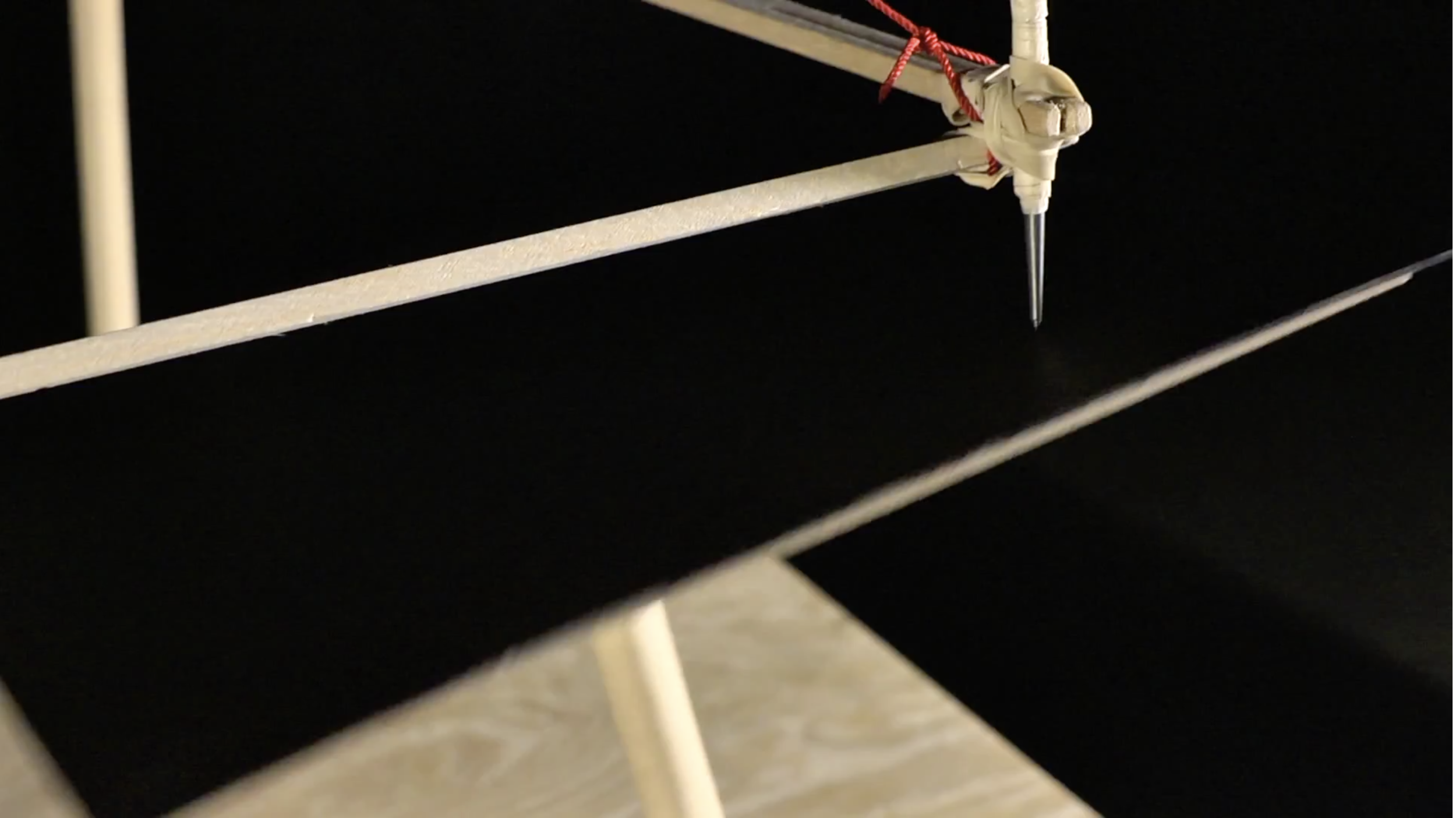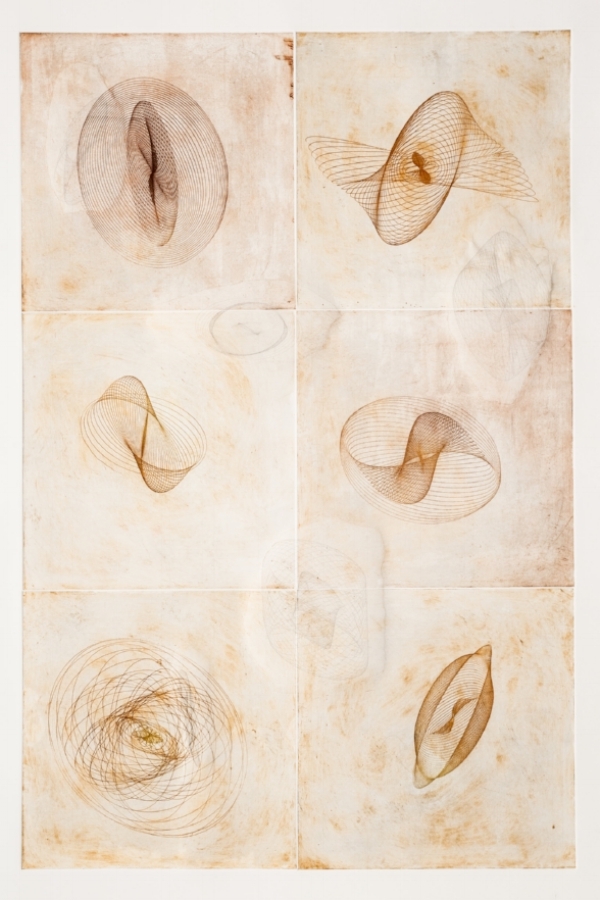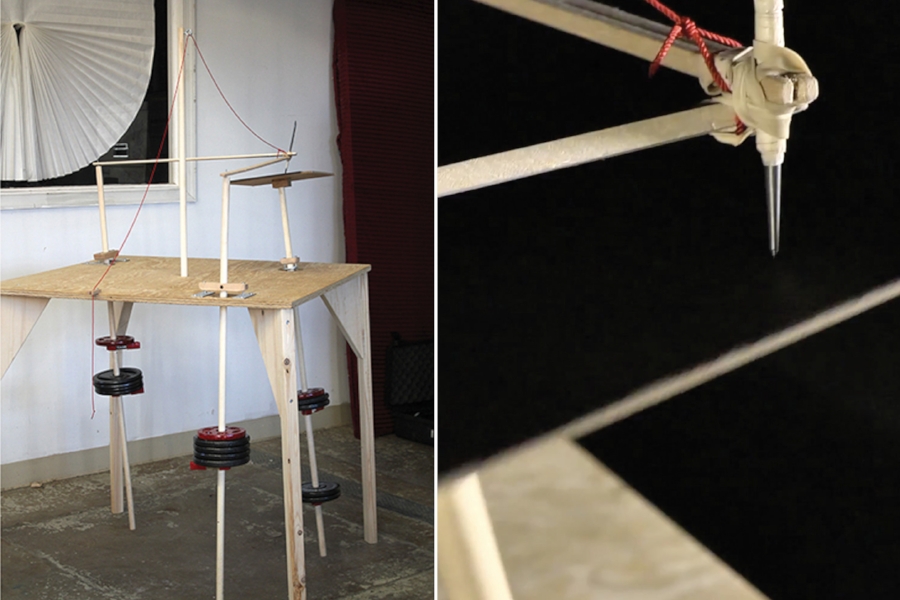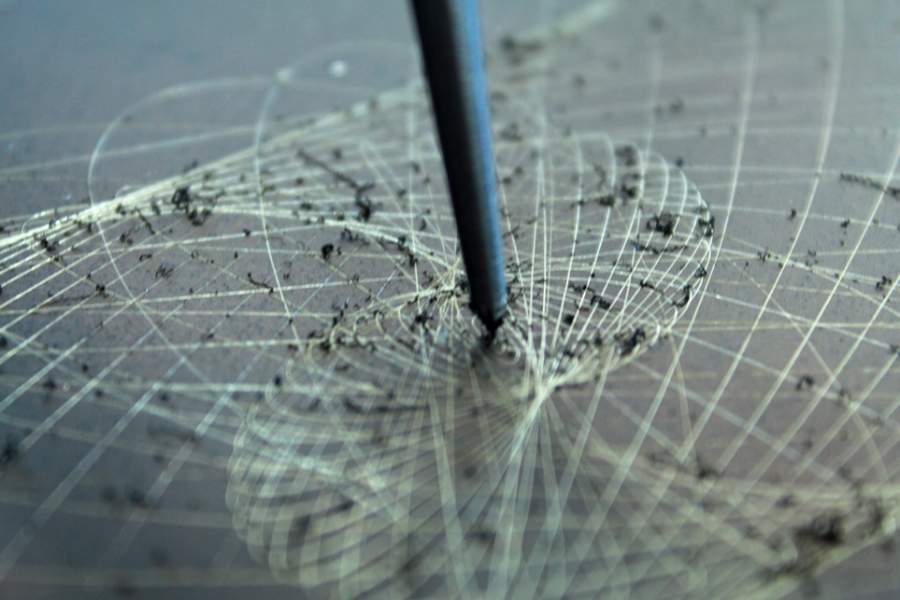
Songlines
An intaglio series of harmonograph drawings. Printed with hand-made pigments mined by the artist in the Australian outback

The harmonograph
The harmonograph is a 19th century drawing non-mechanical drawing machine that visualizes a mathematical theory of the Lissajous curve. This curve is found in analog waves seen on early monitors and because of its complexity used in currency to avoid counterfitting.

Intaglio, chine-collé and hand-made pigment 36" x 72"
The Intaglio is printed with pigment made from ochre "kurra", iron ore. This highly sought after pigment was collected by the Dieri tribes, along their "songline", or dreaming path, in South Australia for thousands of years. Kurra was traded throughout the continent for special ceremonies, such as weddings, and was as significant and valuable as gold is today.

The mining site
This photograph depicts the ancient ochre mining site in Lyndhurst, South Australia along the Dieri songline. It’s still a sacred site today, and next to the site where the artist mined her pigment.

A copper mine
South Australia, 2012.

The machine
The harmonograph is powered solely by gravity and momentum. An engraving needle draws on an intaglio zinc plate, or with a pencil is attached to draw on paper.
The pendulums are setup in a way that relates their motion to the current price of gold and iron ore.

++
Special thanks to the Visual Arts Centre (VAC) La Trobe University; Pyramid Atlantic; Lukeworks, Inc.; MICA Print Studios; Maryland State Arts Council and UMBC.